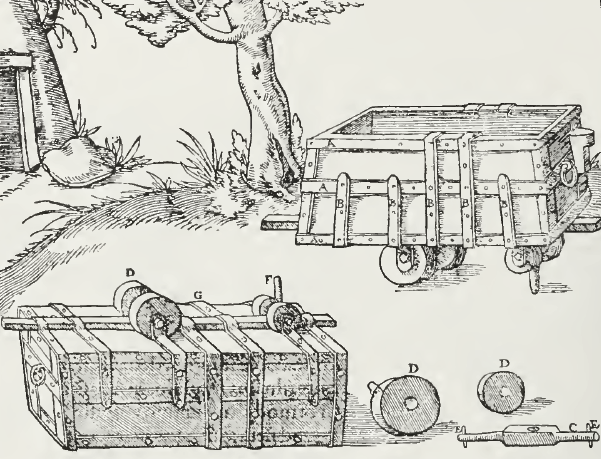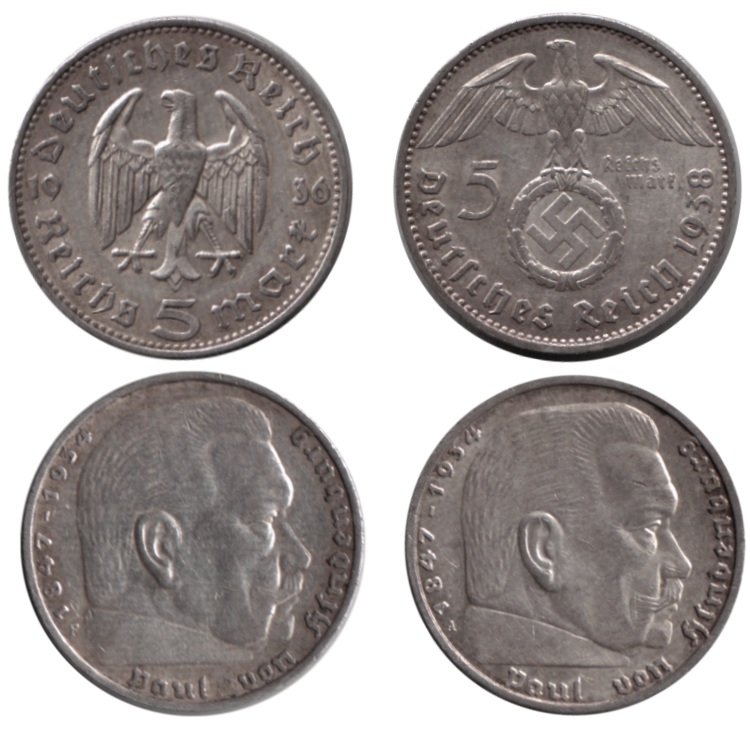|
Kunze–Knorr Brake
The Kunze-Knorr brake (''Kunze-Knorr-Bremse'' or ''KK-Bremse'') is an automatic compressed-air brake for goods, passenger and express trains. It was the first graduated brake for goods trains in Europe. When it was introduced after the First World War, goods train brakes switched from hand operation to compressed-air in various European countries. The Deutsche Reichsbahn alone put the cost of equipping German goods wagons with Kunze-Knorr brakes between 1918 and 1927 at 478.4 million Reichsmarks. The operating cost savings from faster goods services and having fewer brakemen was assessed by the Reichsbahn at almost 96.3 million Reichsmark annually. Inventors The Kunze-Knorr brake brought together the ideas of Prussian senior surveyor, Bruno Kunze (1854–1935), and preparatory work by the founder of Knorr-Bremse, Georg Knorr (1859–1911). It was the first, continuous, compressed-air brake that, even on long goods trains, enabled the brake force not only to be applied gradually ... [...More Info...] [...Related Items...] OR: [Wikipedia] [Google] [Baidu] |
Berlin
Berlin ( ; ) is the Capital of Germany, capital and largest city of Germany, by both area and List of cities in Germany by population, population. With 3.7 million inhabitants, it has the List of cities in the European Union by population within city limits, highest population within its city limits of any city in the European Union. The city is also one of the states of Germany, being the List of German states by area, third smallest state in the country by area. Berlin is surrounded by the state of Brandenburg, and Brandenburg's capital Potsdam is nearby. The urban area of Berlin has a population of over 4.6 million and is therefore the most populous urban area in Germany. The Berlin/Brandenburg Metropolitan Region, Berlin-Brandenburg capital region has around 6.2 million inhabitants and is Germany's second-largest metropolitan region after the Rhine-Ruhr region, as well as the List of EU metropolitan areas by GDP, fifth-biggest metropolitan region by GDP in the European Union. ... [...More Info...] [...Related Items...] OR: [Wikipedia] [Google] [Baidu] |
Railway Brakes
A railway brake is a type of brake used on the cars of railway trains to enable deceleration, control acceleration (downhill) or to keep them immobile when parked. While the basic principle is similar to that on road vehicle usage, operational features are more complex because of the need to control multiple linked carriages and to be effective on vehicles left without a prime mover. Clasp brakes are one type of brakes historically used on trains. Early developments In the earliest days of railways, braking technology was primitive. The first trains had brakes operative on the locomotive tender and on vehicles in the train, where "porters" or, in the United States brakemen, travelling for the purpose on those vehicles operated the brakes. Some railways fitted a special deep-noted brake whistle to locomotives to indicate to the porters the necessity to apply the brakes. All the brakes at this stage of development were applied by operation of a screw and linkage to brake bloc ... [...More Info...] [...Related Items...] OR: [Wikipedia] [Google] [Baidu] |
History Of Rail Transport In Germany
The history of rail transport in Germany can be traced back to the 16th century. The earliest form of railways, wagonways, were developed in Germany in the 16th century. Modern German rail history officially began with the opening of the steam-powered Bavarian Ludwig Railway between Nuremberg and Fürth on 7 December 1835. This had been preceded by the opening of the horse-drawn Prince William Railway on 20 September 1831. The first long-distance railway was the Leipzig-Dresden railway, completed on 7 April 1839. Forerunners The forerunner of the railway in Germany, as in England, was to be found mainly in association with the mining industry. Mine carts were used below ground for transportation, initially using wooden rails, and were steered either by a guide pin between the rails or by flanges on the wheels. A wagonway operation was illustrated in Germany in 1556 by Georgius Agricola (image right) in his work '' De re metallica''. This line used "Hund" carts with unflanged ... [...More Info...] [...Related Items...] OR: [Wikipedia] [Google] [Baidu] |
East Germany
East Germany, officially known as the German Democratic Republic (GDR), was a country in Central Europe from Foundation of East Germany, its formation on 7 October 1949 until German reunification, its reunification with West Germany (FRG) on 3 October 1990. Until 1989, it was generally viewed as a communist state and described itself as a Socialist state, socialist "workers' and peasants' state". The Economy of East Germany, economy of the country was Central planning, centrally planned and government-owned corporation, state-owned. Although the GDR had to pay substantial war reparations to the Soviets, its economy became the most successful in the Eastern Bloc. Before its establishment, the country's territory was administered and occupied by Soviet forces following the Berlin Declaration (1945), Berlin Declaration abolishing German sovereignty in World War II. The Potsdam Agreement established the Soviet occupation zone in Germany, Soviet-occupied zone, bounded on the east b ... [...More Info...] [...Related Items...] OR: [Wikipedia] [Google] [Baidu] |
Deutsche Reichsbahn (East Germany)
The Deutsche Reichsbahn (, ) or DR was the operating name of state owned railways in East Germany, and after German reunification until 1 January 1994. In 1949, occupied Germany's railways were returned to German control after four years of Allied control following World War II. Those in the Soviet occupation zone (which became the German Democratic Republic or GDR on 7 October 1949) continued to run as the Deutsche Reichsbahn, the name given to the German national railways in 1937. In West Germany, the Reichsbahn was succeeded by the Deutsche Bundesbahn (DB). Both the Reichsbahn and the Bundesbahn continued as separate entities until 1994, when they merged to form the Deutsche Bahn. Organisation The DR was the largest employer in the GDR and as a state-owned firm was directly subordinated to the GDR Ministry of Transport ''(Ministerium für Verkehr der DDR)''. From November 1954 until November 1989, the GDR Minister of Transport also occupied the position of the Direct ... [...More Info...] [...Related Items...] OR: [Wikipedia] [Google] [Baidu] |
Munich
Munich is the capital and most populous city of Bavaria, Germany. As of 30 November 2024, its population was 1,604,384, making it the third-largest city in Germany after Berlin and Hamburg. Munich is the largest city in Germany that is not a state of its own. It ranks as the 11th-largest city in the European Union. The metropolitan area has around 3 million inhabitants, and the broader Munich Metropolitan Region is home to about 6.2 million people. It is the List of EU metropolitan regions by GDP#2021 ranking of top four German metropolitan regions, third largest metropolitan region by GDP in the European Union. Munich is located on the river Isar north of the Alps. It is the seat of the Upper Bavaria, Upper Bavarian administrative region. With 4,500 people per km2, Munich is Germany's most densely populated municipality. It is also the second-largest city in the Bavarian language, Bavarian dialect area after Vienna. The first record of Munich dates to 1158. The city ha ... [...More Info...] [...Related Items...] OR: [Wikipedia] [Google] [Baidu] |
Knorr-Bremse
Knorr-Bremse AG is a German manufacturer of braking systems for rail and commercial vehicles that has operated since 1905. Other products in the company's portfolio include intelligent door systems, control components, air conditioning systems for rail vehicles, torsional vibration dampers, and transmission control systems for commercial vehicles. The Group has a presence in over 30 countries, at 100 locations. In 2022, the Group's workforce of over 31,000 achieved worldwide sales of EUR 7.15 billion. History Foundation and early years The Germany engineer Georg Knorr established ''Knorr-Bremse GmbH'' in 1905 in Boxhagen-Rummelsburg, Neue Bahnhofstraße, outside Berlin (since 1920 part of Berlin-Friedrichshain). From the onset, the company benefitted heavily from Knorr's prior experience working on railway braking systems at, ''Carpenter & Schulze'', a separate company that he owned. Knorr promptly put into production an innovative rapid release brake that could b ... [...More Info...] [...Related Items...] OR: [Wikipedia] [Google] [Baidu] |
Bruno Kunze
Bruno may refer to: People and fictional characters * Bruno (name), including lists of people and fictional characters with either the given name or surname * Bruno, Duke of Saxony (died 880) * Bruno the Great (925–965), Archbishop of Cologne, Duke of Lotharingia and saint * Bruno (bishop of Verden) (920–976), German Roman Catholic bishop * Pope Gregory V (c. 972–999), born Bruno of Carinthia * Bruno of Querfurt (c. 974–1009), Christian missionary bishop, martyr and saint * Bruno of Augsburg (c. 992–1029), Bishop of Augsburg * Bruno (bishop of Würzburg) (1005–1045), German Roman Catholic bishop * Pope Leo IX (1002–1054), born Bruno of Egisheim-Dagsburg * Bruno II (1024–1057), Frisian count or margrave * Bruno the Saxon (fl. 2nd half of the 11th century), historian * Saint Bruno of Cologne (d. 1101), founder of the Carthusians * Bruno (bishop of Segni) (c. 1045–1123), Italian Roman Catholic bishop and saint * Bruno (archbishop of Trier) (died 1124), German Ro ... [...More Info...] [...Related Items...] OR: [Wikipedia] [Google] [Baidu] |
Reichsmark
The (; sign: ℛ︁ℳ︁; abbreviation: RM) was the currency of Germany from 1924 until the fall of Nazi Germany in 1945, and in the American, British and French occupied zones of Germany, until 20 June 1948. The Reichsmark was then replaced by the Deutsche Mark, to become the currency of West Germany and then all of Germany after the 1990 reunification. The Reichsmark was used in the Soviet occupation zone of Germany until 23 June 1948, where it was replaced by the East German mark. The Reichsmark was subdivided into 100 (Rpf or ℛ︁₰). The Mark is an ancient Germanic weight measure, traditionally a half pound, later used for several coins; (''realm'' in English) comes from the official name for the German state from 1871 to 1945, . History The Reichsmark was introduced in 1924 as a permanent replacement for the '' Papiermark''. This was necessary due to the 1920s German inflation which had reached its peak in 1923. The exchange rate between the old ''Papiermark'' ... [...More Info...] [...Related Items...] OR: [Wikipedia] [Google] [Baidu] |
Deutsche Reichsbahn-Gesellschaft
The ''Deutsche Reichsbahn'' (), also known as the German National Railway, the German State Railway, German Reich Railway, and the German Imperial Railway, was the German national railway system created after the end of World War I from the regional railways of the individual states of the German Empire. The ''Deutsche Reichsbahn'' has been described as "the largest enterprise in the capitalist world in the years between 1920 and 1932"; nevertheless, its importance "arises primarily from the fact that the Reichsbahn was at the center of events in a period of great turmoil in German history". Overview The company was founded on 1 April 1920 as the ("German Imperial Railways") when the Weimar Republic, which still used the nation-state term of the previous monarchy, (German Reich, hence the usage of the in the name of the railway; the monarchical term was ), took national control of the German railways, which had previously been run by the German states ('' Länderbahnen''). ... [...More Info...] [...Related Items...] OR: [Wikipedia] [Google] [Baidu] |






